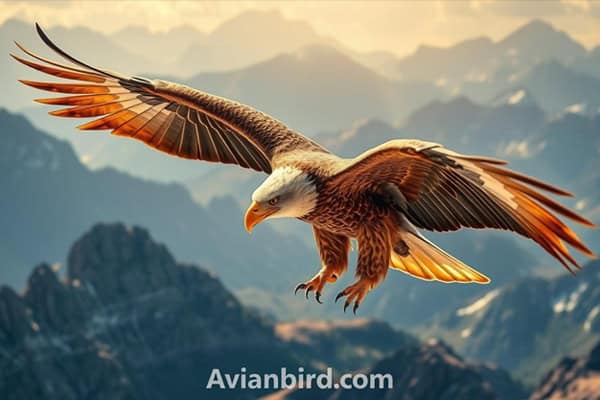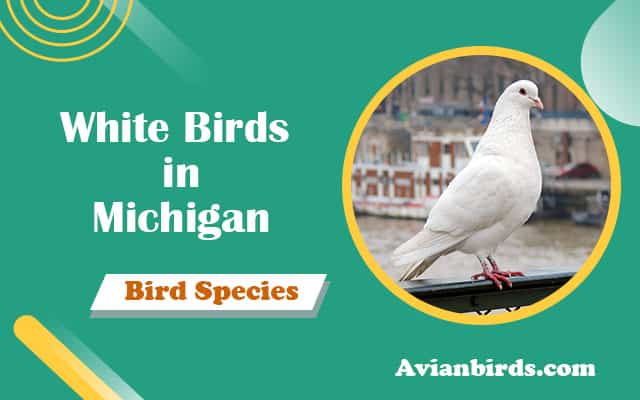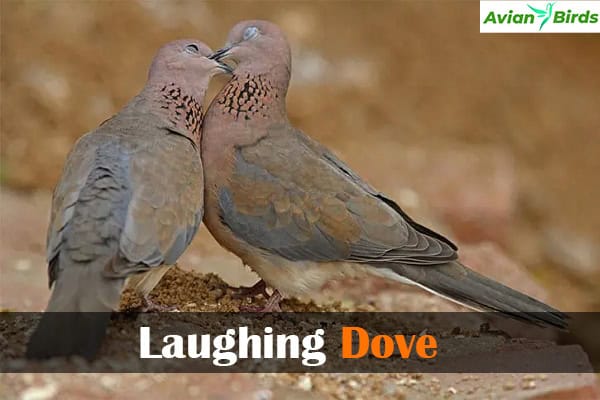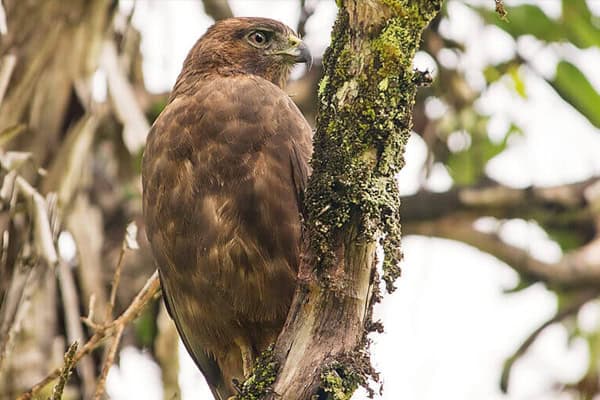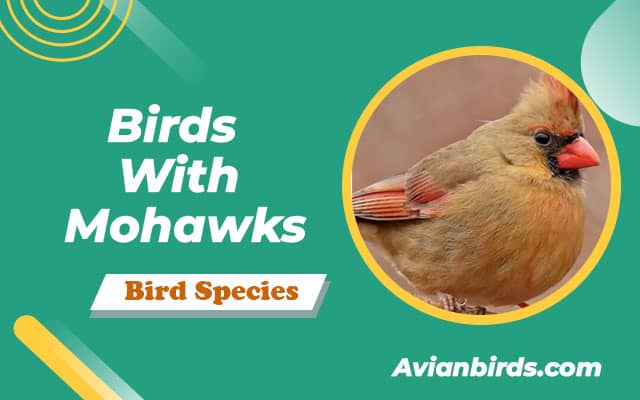Top 10 Largest Birds of Prey (With Stunning Photos)
Ever wondered which birds of prey are the biggest and most majestic in the sky? Let’s explore the world of the largest birds of prey together. We’ll highlight our top choices for the most impressive raptors, with stunning photos that show off their beauty. From the grand eagle species to the powerful vulture characteristics, these birds are truly awe-inspiring. Get ready for an amazing journey and learn how these incredible birds have left their mark on Earth!
Birds of Prey Characteristics
Raptors have many interesting traits that make them stand out. Their bird anatomy is key to these traits. Features like sharp talons and hooked beaks help them catch and tear their food. These traits show how they’ve evolved to be great hunters.
They also have amazing vision, letting them see prey from far away. Their feathers are made for better flying. This lets them move through different places, like deep forests or wide plains.
Looking into their hunting ways shows how well they’re made for their job. Their sharp vision and strong flying skills help them survive in many places. By studying these traits, we learn a lot about birds of prey. We see how tough and efficient they are in the wild.
Largest Birds of Prey
We often look up in awe at the largest raptors soaring above. Their size is key in many parts of their lives. Big birds of prey have special traits that help them hunt and survive. These traits let them rule their environments and show they are top predators.
Why Size Matters in the Raptor World
Size is crucial for these birds’ hunting and their role in nature. The biggest raptors have big advantages because of their size. These include:
- They can catch bigger animals, giving them more food choices.
- They have wider wings, making it easier to cover large areas.
- They can control more territory, keeping smaller birds away.
This shows how important size is for raptors. It affects how they hunt and their effect on their homes.
Exploring Their Habitats and Range
Knowing where the biggest birds of prey live helps us understand their role in nature. They live in many places, like:
- Dense forests, where they hide to surprise their prey.
- Open savannahs, giving them a lot of space to hunt.
- Steep mountainsides, perfect for nests and looking out for food.
These birds can be found on many continents, adapting to different places. Looking into their homes shows us how they live and the problems they face.
| Raptor Species | Typical Habitat | Geographical Range |
|---|---|---|
| Eurasian Eagle Owl | Forests and mountains | Europe and Asia |
| Martial Eagle | Savannahs and woodlands | Africa |
| Philippine Eagle | Tropical forests | Philippines |
| Steller’s Sea Eagle | Coastal regions | Russia and Japan |
| Harpy Eagle | Rainforests | Central and South America |
1. Eurasian Eagle Owl
- Scientific Name: Bubo bubo
- Size: 60–75 cm (24–30 in)
- Weight: 1.5–4.2 kg (3.3–9.3 lb)
- Lifespan: 20–60 years
- Diet: Small mammals, birds, and reptiles
The Eurasian Eagle Owl is a standout among large owls, known for its impressive features. It can weigh up to 4.2 kilograms (9.2 lbs) and has a wingspan of about 2 meters (6.5 feet). This makes it a notable member of the Raptor family.
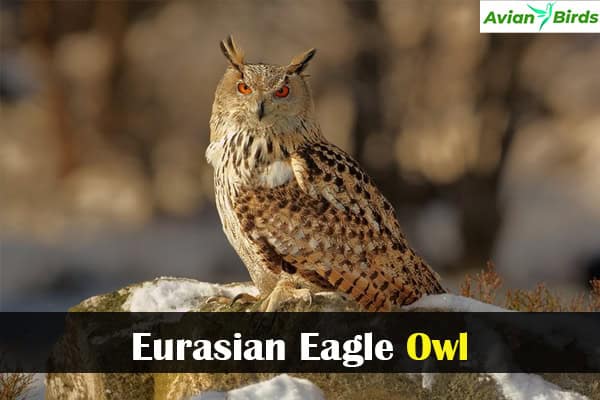
Physical Description
This bird has unique markings and colors that vary by location. It has tufted ears and bright orange eyes, adding to its intimidating look. Its feathers are often shades of brown and grey, helping it blend into its surroundings.
Diet and Hunting Behavior
The Eurasian Eagle Owl eats a variety of small mammals. It mainly hunts rodents, rabbits, and small foxes. Its hunting is stealthy and precise, making it a top predator. It uses its sharp night vision and strong talons to catch prey.
| Attribute | Detail |
|---|---|
| Weight | Up to 4.2 kg (9.2 lbs) |
| Wingspan | Approximately 2 m (6.5 ft) |
| Primary Diet | Rodents, rabbits, small foxes |
| Hunting Time | Primarily nocturnal |
| Coloration | Brown and grey plumage with dark markings |
2. Martial Eagle
- Scientific Name: Polemaetus bellicosus
- Size: 66–75 cm (26–30 in)
- Weight: 2.5–6.5 kg (5.5–14.3 lb)
- Lifespan: 15–20 years
- Diet: Birds, small mammals, and reptiles
The Martial Eagle is Africa’s biggest eagle, with a wingspan of 2.6 meters (8.5 feet). It can be seen flying over different parts of Africa. It likes certain types of places, which we’ll talk about. Knowing where it lives helps us understand its importance in Africa’s bird world.

Habitat and Range
This eagle lives in open savannahs and woodlands. These places give it enough room to hunt and nest. It can be found all over Africa, showing how well it can live in many places. This shows how big its territory is across the continent.
Threats and Conservation
The Martial Eagle is facing big threats. Losing its home is a big problem, mainly because of farms and cities growing. Eagles and farmers often clash, as farmers see eagles as threats to their animals. We need to act fast to protect this eagle. We must focus on keeping wildlife safe, especially the Martial Eagle.
| Threats to Martial Eagle | Description |
|---|---|
| Habitat Destruction | Loss of natural habitats due to agriculture and urban development. |
| Farm Conflicts | Farmers view eagles as predators threatening their livestock. |
| Climate Change | Alterations in climate patterns affecting food sources and nesting sites. |
| Poaching | Illegal hunting and trapping for trade threaten local populations. |
3. Philippine Eagle
- Scientific Name: Pithecophaga jefferyi
- Size: 70–102 cm (28–40 in)
- Weight: 4.5–8 kg (9.9–17.6 lb)
- Lifespan: 30–60 years
- Diet: Primarily monkeys, birds, and reptiles
The Philippine Eagle is a symbol of pride for the Philippines. It shows the country’s rich biodiversity. This bird is a reminder of the need to protect endangered species.

National Symbol of the Philippines
This eagle is known for its strength and freedom symbolism. But, it’s in danger due to habitat loss and human actions. We must protect it to save the species.
There are efforts to save the Philippine Eagle. These include:
- Habitat preservation through conservation programs
- Community awareness campaigns to educate on the eagle’s importance
- Regulation of land use to protect nesting sites
Understanding the Philippine Eagle’s importance helps us protect our environment. Every effort to save this bird shows our dedication to nature.
| Aspect | Description |
|---|---|
| Cultural Significance | Symbol of national pride and biodiversity |
| Conservation Status | Endangered species, facing habitat loss |
| Key Threats | Deforestation, poaching, and human encroachment |
| Conservation Efforts | Habitat protection, awareness programs, and legal regulations |
4. Steller’s Sea Eagle
- Scientific Name: Haliaeetus pelagicus
- Size: 70–102 cm (28–40 in)
- Weight: 3–6.3 kg (6.6–13.9 lb)
- Lifespan: 20–30 years
- Diet: Fish, birds, and carrion
The Steller’s Sea Eagle is the largest eagle in the world, weighing about 9 kilograms (19.8 lbs) and with a wingspan of 2.5 meters (8.1 feet). It is both beautiful and at risk. We must look into the threats it faces in its home.

Endangered Status
This eagle is facing many challenges as an endangered bird. Human activities and climate change are destroying its home. Also, eating lead from spent ammunition is poisoning it.
Efforts to save the Steller’s Sea Eagle focus on protecting its home and reducing threats. These efforts include:
- Creating safe areas for nesting and finding food.
- Teaching local people why this eagle is important.
- Encouraging ways to protect wildlife.
5. Harpy Eagles
- Scientific Name: Harpia harpyja
- Size: 86–107 cm (34–42 in)
- Weight: 6.5–10 kg (14–22 lb)
- Lifespan: 25–35 years
- Diet: Primarily sloths and monkeys
Harpy Eagles live in dense tropical forests and have amazing survival skills. They have special hunting ways that set them apart. These birds are known for catching fast-moving animals like sloths and monkeys. This shows how well they specialize in hunting.
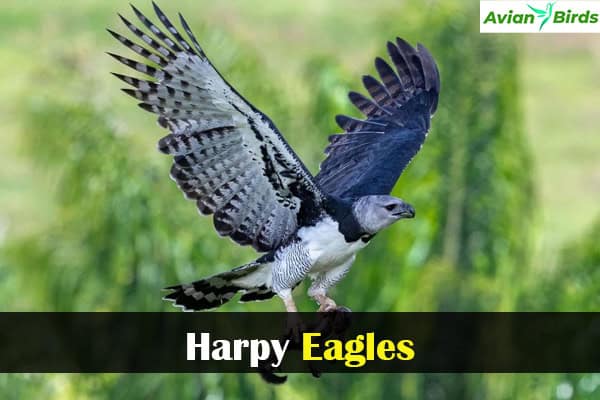
Unique Hunting Techniques
Harpy Eagles use smart moves to hunt in tough places. Their wings are short but strong, helping them dodge through trees. They have great eyesight and sharp talons for catching and holding onto their prey quickly.
- Stealthy Approaches: Harpy Eagles quietly watch for any movement before striking.
- Ambush Techniques: They surprise their prey by jumping from trees to catch them off guard.
- Powerful Grasp: Once caught, their strong talons hold their prey tightly.
Harpy Eagles mainly eat sloths and monkeys. Their hunting skills let them live in the trees. As they fly through the trees, they play a key role in their ecosystem.
6. African Crowned Eagle
- Scientific Name: Stephanoaetus coronatus
- Size: 65–75 cm (26–30 in)
- Weight: 2.5–4.5 kg (5.5–9.9 lb)
- Lifespan: 10–20 years
- Diet: Monkeys, small mammals, and birds
The African Crowned Eagle birds of Prey is a top bird among powerful raptors. It can take down prey up to 35 kg (77.1 lbs) in weight. This shows its strength and quickness in the wild. It lives in dense forests, mainly in Africa’s tropical areas.
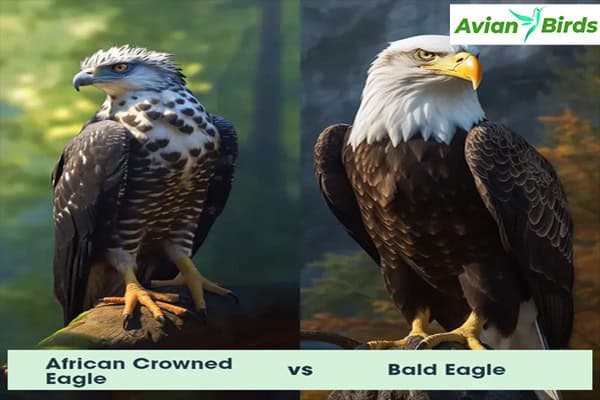
This eagle is known for its unique look, with a striking crest and big talons. These features help it live in different places like rainforests and woodlands. Seeing this bird is exciting, as it shows off amazing flying skills while hunting.
The African Crowned Eagle mainly eats small to medium-sized mammals and birds. Its diet includes monkeys and duikers. This eagle is crucial to its ecosystem, keeping prey populations in check. With its amazing traits, it’s a favorite among bird lovers and photographers.
7. Bearded Vulture
- Scientific Name: Gypaetus barbatus
- Size: 90–125 cm (35–49 in)
- Weight: 5.5–7.5 kg (12–17 lb)
- Lifespan: 20–30 years
- Diet: Bones, carrion, and some small animals
The Bearded Vulture, also known as the Lammergeyer, is a bird that catches our attention with its unique way of eating and special features. It is known for its skill in breaking bones, showing how it can eat large bones. Unlike other vultures, it drops bones from high up, breaking them on impact. This behavior is key to recycling nutrients back into nature.

Looking into how the Bearded Vulture eats shows how its diet and body work together. It has a big wingspan that helps it glide over mountains easily. Its wings also help it move quickly when it’s looking for food.
This scavenger plays a big part in keeping its home healthy. By breaking down bones, it helps other animals and plants by putting nutrients back into the soil.
In short, the Bearded Vulture is special because of its unique way of eating and its wings. These features help it live well in the mountains. Learning about these things helps us value this amazing bird and its role in nature.
8. California Condor
- Scientific Name: Gymnogyps californianus
- Size: 109–135 cm (43–53 in)
- Weight: 8.5–14 kg (18.5–31 lb)
- Lifespan: 60–80 years
- Diet: Carrion
The California Condor is North America’s largest bird, with a wingspan of up to 3 meters (9.8 feet). These birds are important because they eat carrion. They help break down organic matter and cycle nutrients in the ecosystem.
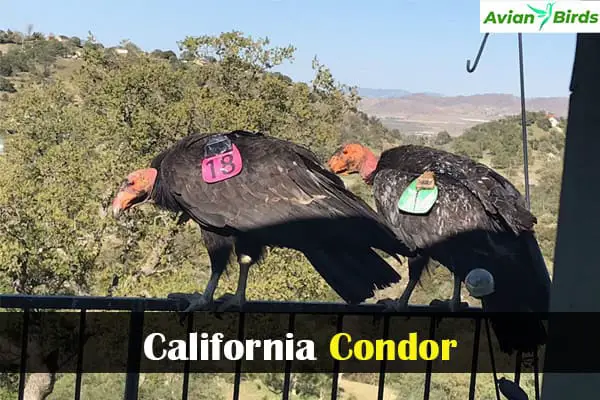
Importance in Ecosystem
These birds are more than just big and beautiful. They are key to keeping the ecosystem balanced. By eating dead animals, they stop diseases from spreading and help break down organic matter. This makes them crucial to their environment.
Protecting the California Condor is important for the ecosystem. Conservation efforts are underway to help these birds. We are working on breeding programs and restoring their habitats. This will help the California Condor thrive in the wild again.
The future of the California Condor depends on our actions. We need to keep working together to protect these birds. By doing so, we can ensure a healthy ecosystem for carrion eaters like the California Condor.
9. Lappet Faced Vultures
- Scientific Name: Torgos tracheliotos
- Size: 85–100 cm (33–39 in)
- Weight: 6.5–11 kg (14–24 lb)
- Lifespan: 20–30 years
- Diet: Carrion, including large animal remains
The Lappet-Faced Vulture is a fascinating bird with a wingspan of up to 3 meters (9.8 feet). It lives in many parts of Africa. This scavenger is known for its aggressive and resourceful ways.

These vultures are known for stealing food from other birds. This helps them survive in tough environments. They often take food from smaller birds, making sure they get the best.
They also hunt smaller animals, not just eat carrion. This makes them versatile and helps them succeed in different places. Watching them shows how complex the relationships are among scavengers in nature.
| Characteristic | Description |
|---|---|
| Wingspan | Up to 3 meters (9.8 feet) |
| Feeding Habits | Steals from other vultures and hunts smaller animals |
| Habitat | Open savannas and grasslands across Africa |
| Behavior | Aggressive scavenging and social foraging |
Learning about the Lappet-Faced Vulture helps us value their role in nature. They clean the environment and help balance wildlife in Africa. By studying them, we learn about the complex relationships among scavengers and why we need to protect these amazing birds.
10. Andean Condor
- Scientific Name: Vultur gryphus
- Size: 102–130 cm (40–51 in)
- Weight: 11–15 kg (24–33 lb)
- Lifespan: 50–70 years
- Diet: Carrion
The Andean Condor is one of the biggest birds of prey, known for its stunning size. It lives in the Andean Condor habitat, mainly in the mountains of South America. These mountains are perfect for the condor to fly high and cover long distances in search of food.
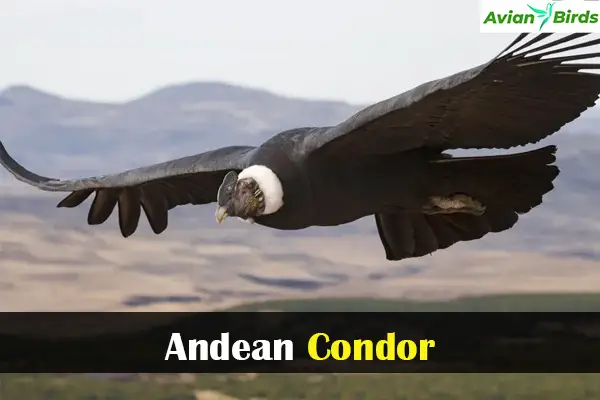
Even with its large size, the Andean Condor is in danger. Threats like losing its home, being hunted, and poisoning are big problems. Conservation groups are working hard to save this bird and its home. By learning about these issues, we can help protect these huge birds.
Check Our 🐦Related Articles:
| How to Paint a Concrete Bird Bath |
| Birds With Orange Heads |
| Spiders in California |
| White Birds with Long Beaks in Florida |
| Small Birds with Long Tails |
Conclusion
As we look back at our journey with the largest birds of prey, we see their unique traits and importance. From the Steller’s Sea Eagle’s wide wings to the Andean Condor’s grandeur, each bird plays a key role in nature. They help keep ecosystems balanced and diverse.
Our journey shows us how vital it is to protect these birds. Many face threats like habitat loss, climate change, and human actions. By supporting conservation, we can help ensure these birds continue to amaze us.
Understanding the role of raptors in nature is crucial for valuing wildlife more. We encourage everyone to help protect these amazing birds. Let’s make sure they keep flying high and continue to inspire us.

